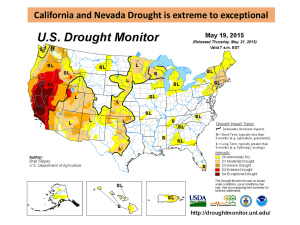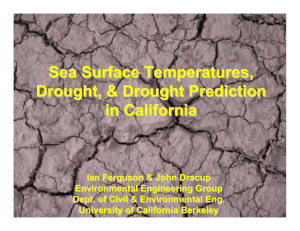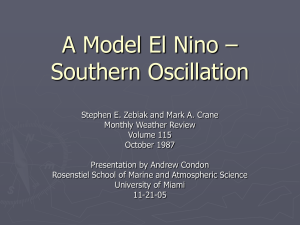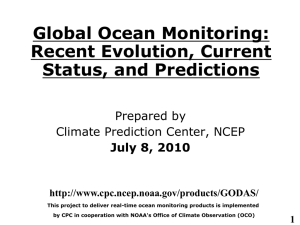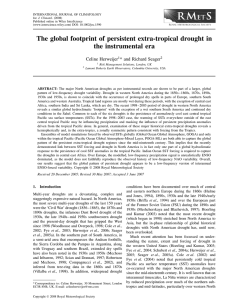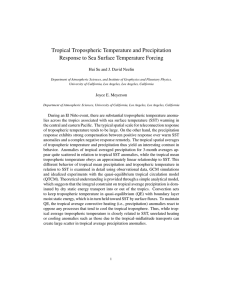Geophysical Research Abstracts Vol. 18, EGU2016-12064, 2016 EGU General Assembly 2016
advertisement
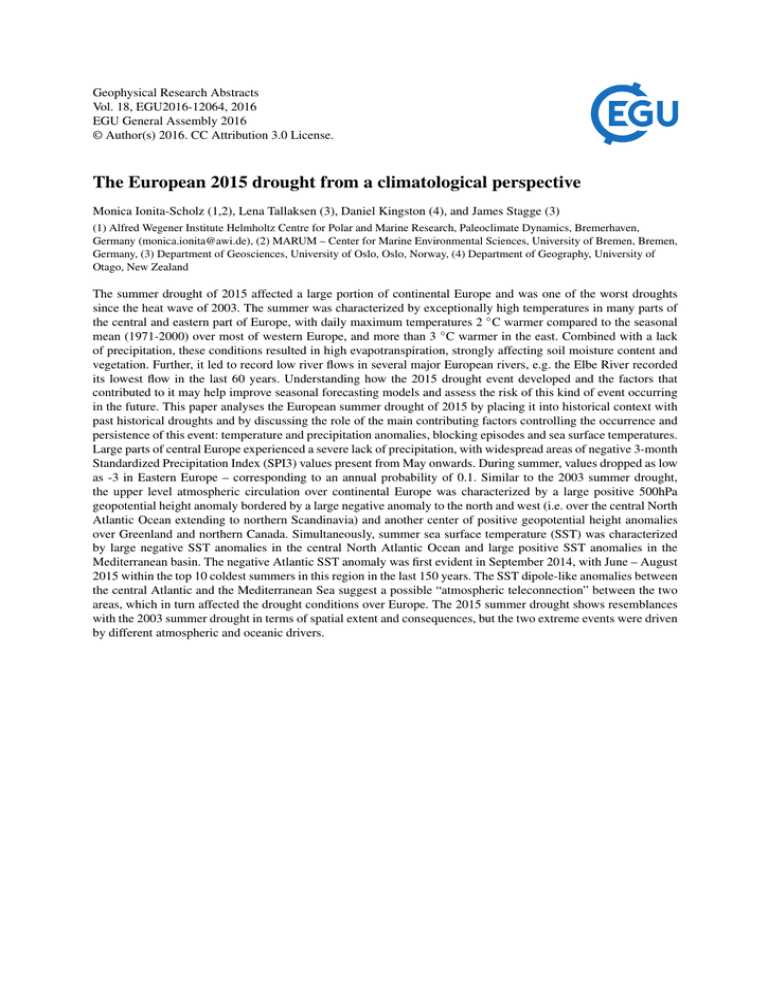
Geophysical Research Abstracts Vol. 18, EGU2016-12064, 2016 EGU General Assembly 2016 © Author(s) 2016. CC Attribution 3.0 License. The European 2015 drought from a climatological perspective Monica Ionita-Scholz (1,2), Lena Tallaksen (3), Daniel Kingston (4), and James Stagge (3) (1) Alfred Wegener Institute Helmholtz Centre for Polar and Marine Research, Paleoclimate Dynamics, Bremerhaven, Germany (monica.ionita@awi.de), (2) MARUM – Center for Marine Environmental Sciences, University of Bremen, Bremen, Germany, (3) Department of Geosciences, University of Oslo, Oslo, Norway, (4) Department of Geography, University of Otago, New Zealand The summer drought of 2015 affected a large portion of continental Europe and was one of the worst droughts since the heat wave of 2003. The summer was characterized by exceptionally high temperatures in many parts of the central and eastern part of Europe, with daily maximum temperatures 2 ◦ C warmer compared to the seasonal mean (1971-2000) over most of western Europe, and more than 3 ◦ C warmer in the east. Combined with a lack of precipitation, these conditions resulted in high evapotranspiration, strongly affecting soil moisture content and vegetation. Further, it led to record low river flows in several major European rivers, e.g. the Elbe River recorded its lowest flow in the last 60 years. Understanding how the 2015 drought event developed and the factors that contributed to it may help improve seasonal forecasting models and assess the risk of this kind of event occurring in the future. This paper analyses the European summer drought of 2015 by placing it into historical context with past historical droughts and by discussing the role of the main contributing factors controlling the occurrence and persistence of this event: temperature and precipitation anomalies, blocking episodes and sea surface temperatures. Large parts of central Europe experienced a severe lack of precipitation, with widespread areas of negative 3-month Standardized Precipitation Index (SPI3) values present from May onwards. During summer, values dropped as low as -3 in Eastern Europe – corresponding to an annual probability of 0.1. Similar to the 2003 summer drought, the upper level atmospheric circulation over continental Europe was characterized by a large positive 500hPa geopotential height anomaly bordered by a large negative anomaly to the north and west (i.e. over the central North Atlantic Ocean extending to northern Scandinavia) and another center of positive geopotential height anomalies over Greenland and northern Canada. Simultaneously, summer sea surface temperature (SST) was characterized by large negative SST anomalies in the central North Atlantic Ocean and large positive SST anomalies in the Mediterranean basin. The negative Atlantic SST anomaly was first evident in September 2014, with June – August 2015 within the top 10 coldest summers in this region in the last 150 years. The SST dipole-like anomalies between the central Atlantic and the Mediterranean Sea suggest a possible “atmospheric teleconnection” between the two areas, which in turn affected the drought conditions over Europe. The 2015 summer drought shows resemblances with the 2003 summer drought in terms of spatial extent and consequences, but the two extreme events were driven by different atmospheric and oceanic drivers.
